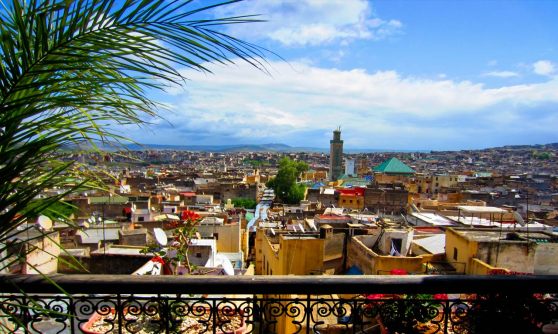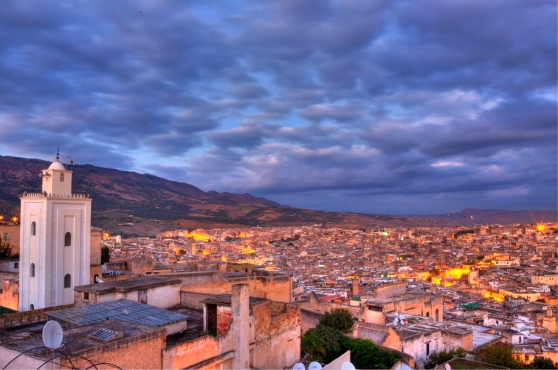
Being, one of the most significant urban communities in Morocco, Fez is wealthy in culture, history, conventions, gastronomy and considerably more! With one of the main universities and the most established medieval Medina on the planet, this city has a great deal to offer and there is something new and energizing to do every day. Here are the 10 best things to see, do and taste during your Fez day trip after the end of COVID 19 pandemic with local tour operators.

Al Quaraouiyine Mosque
The construction of Al Quaraouiyine happened in 859 AD by Fatima al-Fihri, and accepted to be probably the most established universities on the planet. It presently works as a mosque and non-Muslims cannot enter it. Nevertheless, the redesigning of its library happened in 2016 and made open to people in general, and you can get a brief look at the great, carefully assembled tile work going back to the ninth century. You can likewise get an ideal perspective on the mosque yard from the housetops of close by eateries in the Medina.
Dar Batha
Situated in the Medina, Dar Batha is a previous royal residence that transformed into a historical center in 1915, with an astounding assortment of customary ancient rarities. It has an awesome Andalusian-style garden at its passageway, with various kinds of plants, smells and sounds, in addition to mosaics and a drinking fountain. Inside, you will discover fine woodcarvings, Moroccan tiles, weaving, covers and even a clay assortment from the fourteenth century.
Chouara Tannery
This is the most famous spot in Fez, and the most established tannery on the planet, where they despite everything work as they did in medieval occasions. Here men make leather in an enormous tannery encompassed by houses and shops. The smell can get rather extreme, so a scarf to cover your nose or some mint leaves to rub under it is good to have, as this is certainly a one of a kind site to observe.
MedersaBouInania
Directly at the passageway of the Old Medina lies the previous college for Muslim learned people. It was worked by Sultan BouInan in the fourteenth century however has been delightfully reestablished, including exquisite mosaics, carved plaster, cedar mashrabiyyas which are lattice screens and amazingly huge entryways. Within is mind-blowing, with a wellspring in the yard and interminable, hand-cut dividers and zellij tile work. It likewise has rooms on two stories, where the organization of classes happened.
Merenid Tombs
These tombs house the skeletal survives from sultans and different royals of the Merenid Dynasty. In spite of the fact that not flawless, and a large portion of the adornments and etchings have blurred consistently, you can at present observe the credibility of the engineering. The move up the slope is unquestionably worth the view over the 1200-year-old Medina, particularly during nightfall. Simply be careful about remaining on the slope too long after dusk, as the plummet can get troublesome in obscurity.
Al-Attarine Madrasa
This Madrasa situated close to the Al-Quaraouiyine Mosque and the Al-Attarine Souk, a market with an assortment of local flavors, dried nuts, fruits and more. Al-Attarine was an extension to Al-Quaraouiyine and made with a similar structure, with delightful green and blue zellij tilework, carved plaster and cedarwood, in addition to study halls inside and a wellspring in the patio.
Dar el Makhzen
Dar el Makhzen, the Royal Palace of Fez, probably will not be available to the general population however is unquestionably worth seeing. The illustrious family does not live there, yet they keep up a castle in each city for every one of their visits. Really, an amazing sight, it highlights tremendous entryways made of metal and gold, encompassed by zellij tile work and cut cedarwood. It is a well-known spot with sightseers, as the detailed mosaics and striking hues make for excellent pictures that play with light and viewpoint.
Mellah
Mellah turned into a Jewish quarter in the fourteenth century and Fes el-Jdid turned into a shelter for the Jewish people group. Initially home to 250,000 Jews, since the making of Israel just 70 presently stay in Ville Nouvelle. The quarter is loaded with history and Jewish-style engineering, for example, the Ibn Danan synagogue situated in the core of the Mellah, where a few structures housed individuals up until the late twentieth century.
Mount Zalagh
In case you are a fanatic of perspectives, this will merit the climb. Mount Zalagh is in the north of Fez el-Bali and is described by beautiful scenes loaded with olive forests, grazing goats and flying birds. From here, you will have the option to see the entire of Old Medina, just as perspectives on the encompassing region.
Borj Nord Arms Museum
The construction of this post, situated above Fez el-Bali happened in the sixteenth century by Sultan Ahmad al-Mansur to screen his traitorous populace. It is a perfect spot to get a stunning perspective on the Old Medina if the climbing right to Mount Zalagh feels excessive. In 2016, it opened an arms exhibition hall, as it has remained through hundreds of years of war and arms advancement. Here you will discover data on the military history and customs of Morocco, including great antiques, for example, Arab knifes embellished with valuable stones and gems.
Local nourishment to taste
Through the span of decades, Fes has become a goal for some Moroccan and non-Moroccan guests who need to appreciate the sumptuous tastes of nourishments served in its homes, eateries and bistros. In Fes, one can expand one’s culinary skylines and satisfy one’s wants for new tastes.
Truly, the facts confirm that we can locate similar dishes in different areas in Morocco, yet they do not taste equivalent to they do in Fes. The accompanying dishes are four of the most well known and delegate of Fassi cooking.
Lakhli’i:
Khli’i is one of the most loved dishes of individuals in Fes and its encompassing areas. The name khli’i springs from the term to protect something for quite a while until it gets fit to eat. This kind of nourishment is made of kaddid, which is a blend of meat ribs, salt, altsfirh, cumin, coriander, and oil.
Bastilla:
The serving of Bastilla happens in Fassi houses to invite visitors and to give them grace and generosity. A most loved dish for significant Fassi functions and gatherings, it shows a blend of cooking convention and artistry that encapsulates the way of life of Fes.
Chebbakia:
Chebbakia, a little bit of twisted batter deep-fried and absorbed in nectar, has serving during Ramadan as a vital piece of the morning meal supper. One can also have it with harira, a Moroccan soup during the remainder of the year.
Desserts of MoulayIdriss:
In the event that you visit Fes, you cannot return to your city or nation without bringing with you a few bits of that specific sort of sweet. The production of the sweet happen using figs, walnuts, peanuts, cashews, pecans, and caramel, the pieces shift in shading and taste of as per the fixings utilized.
To have the best of exploration and enjoyment at Fes it is best to contact Pure Morocco Tours & Travel now. You can plan your trip to Fes and other parts of Morocco after the COVID 19 pandemic with them and have a discount of 10%.
Book now via the following link BOOK Fez Day Tripor contact us by email to contact@puremoroccotours.com.
